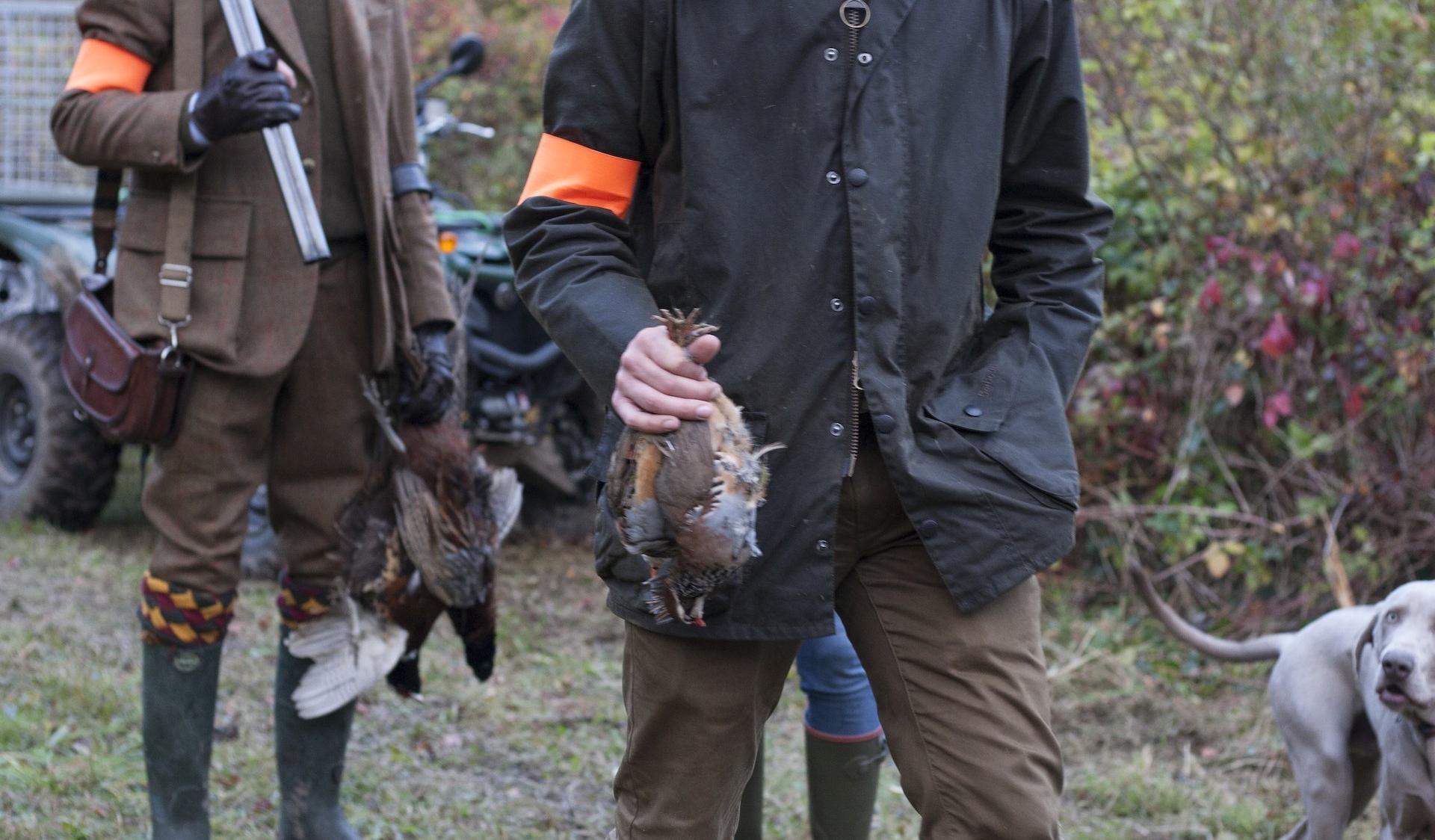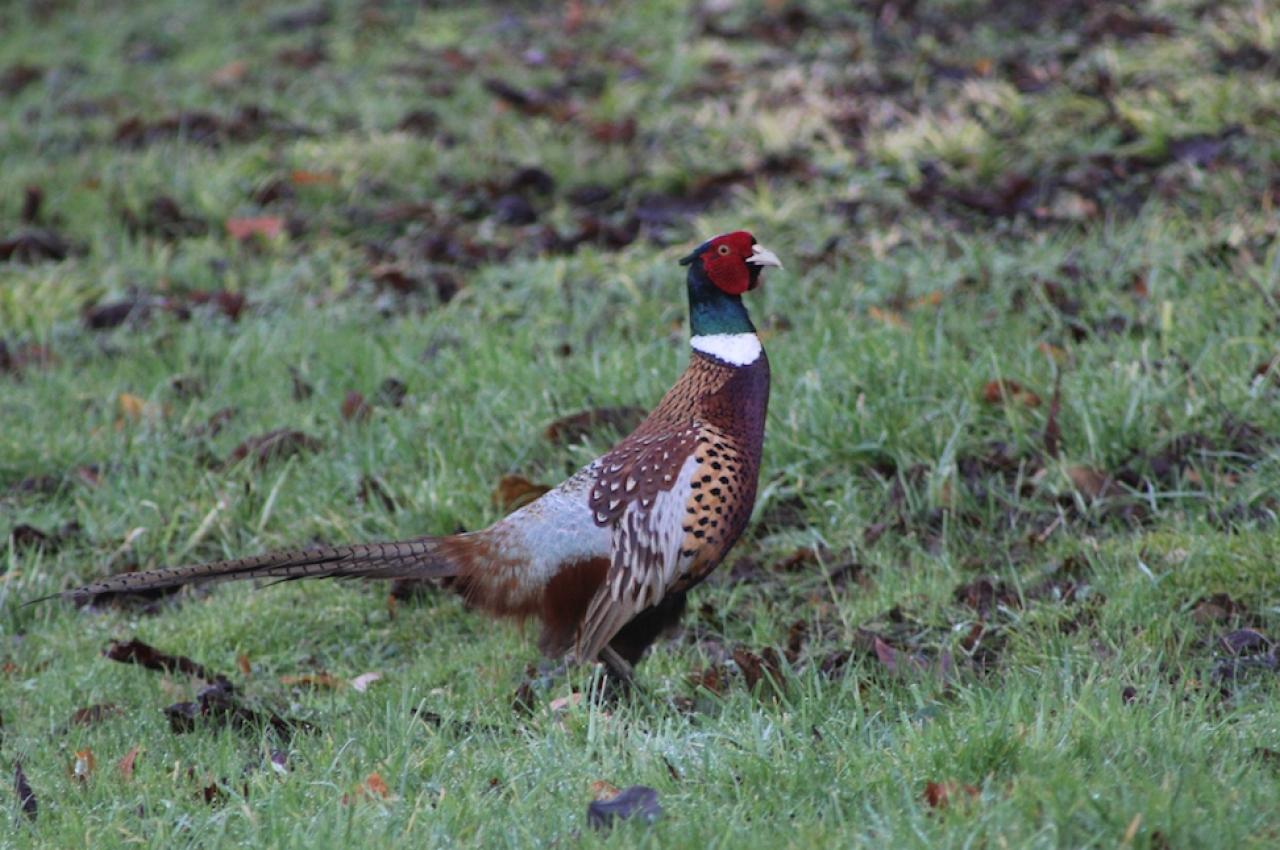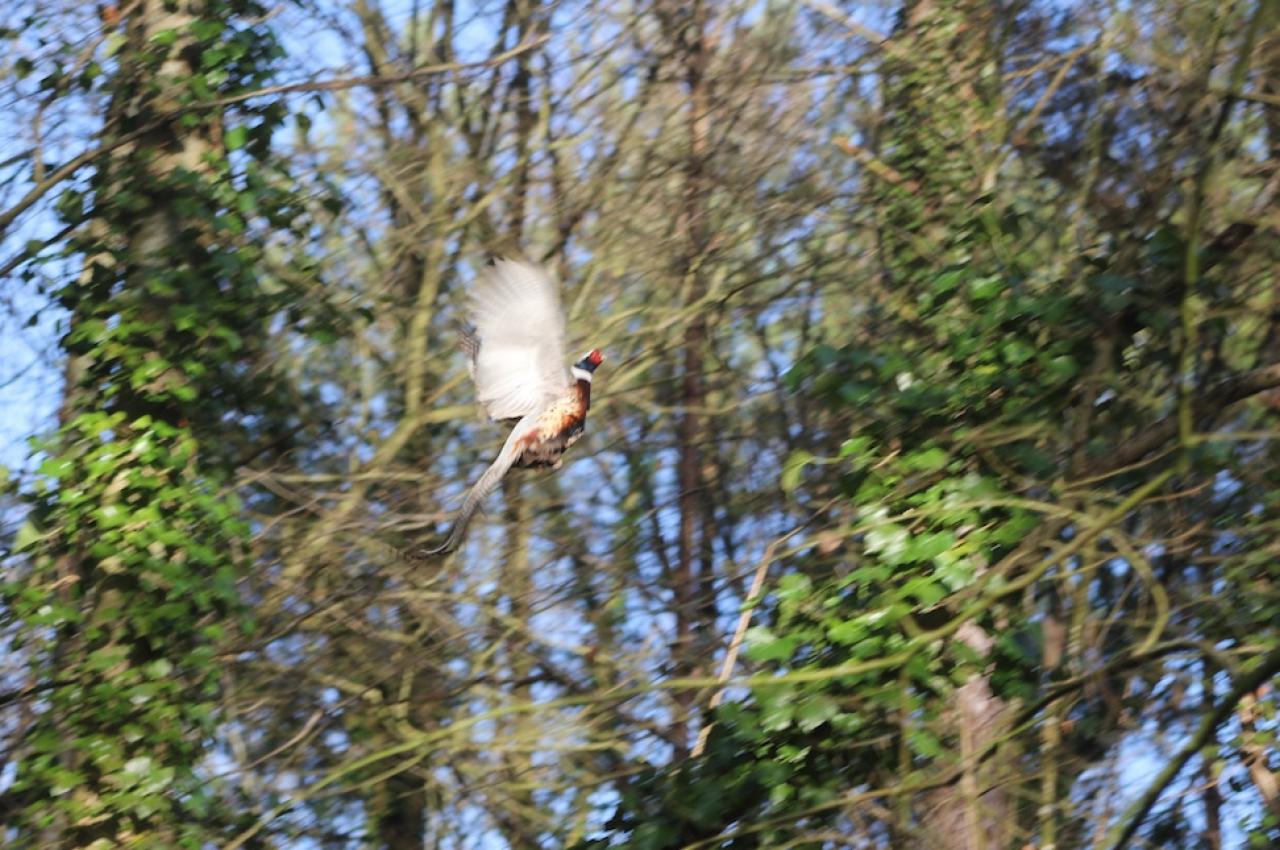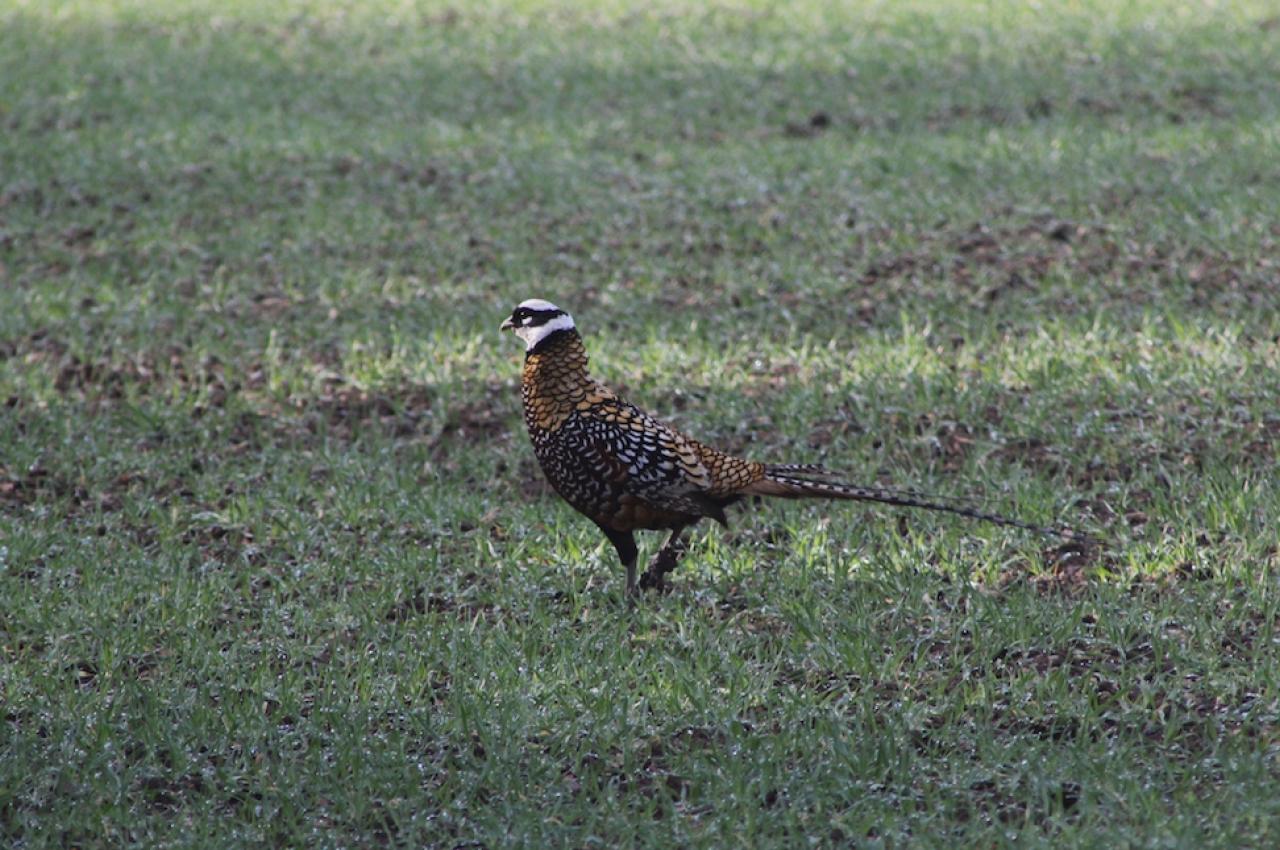The Reeve’s pheasant is a game bird of great quality. Its beautiful feathering, its long tail that can reach more than one metre fifty, with its eyes circled in black like a mask, contribute to make this bird iconic and spectacular. It came originally from the forests of the North and centre of China, then was introduced into England in 1831, then into France in 1870. Some natural populations have become established in a dozen Departments due to regular resettlement. They are now well established in the wooded estate of Lantheuil. The Reeve’s pheasant adapts easily to woods with tall trees and likes to perch on high branches to sleep, which protects them from predators. It is a very much sought after game bird, more vivid than the common pheasant and is consequently more difficult to shoot, and represents a beautiful shot.
The Common Pheasant comes from Asia and was introduced into Europe by the Romans. The species adapted well and is present everywhere in France. It is fond of diversified landscapes with woods, hedges, groves, fallow ground, and fields under crops. Its beautiful dark red colour makes it an notable decorative element of our forests.
The Chinese pheasant is a very elegant bird, thin and lighter than the common pheasant and the Reeve’s pheasant. The cock has multicoloured feathering, like a beautiful print, with copper red on the breast, light yellow on the flanks and the back, and with nuances of bluish grey. It is a pheasant that flies very quickly and has vivid colouring??? It is highly appreciated for sportive hunts.
The American pheasant originated from the United States. Like the Reeve’s pheasant, it is highly appreciated for its fast reaction and high flight. The body is thin and slim. The cock has two white lines on the top of the head. Its feathering is light coloured, and the bottom of the back is of bluish aspect. The hen is of very light colour.
The Grey Partridge is a game bird found in plains, living near cereal fields if there is enough green cover, and hedges. The gamekeeper of the Lantheuil Estate has created hedges and appropriate crops for the birds to settle in. Partridges like to live in coveys. They take off in a rustle of wings, and fly at low altitude.
The Red-legged Partridge is bigger and more colourful than the grey partridge. The beak and the circle around its eyes are of a lovely coral colour and its legs are red. Its population has been decreasing since the 19th century everywhere in Europe, but thanks to the dedication of our gamekeeper, the red-legged partridge seems to settle well on the estate. It stays on lowlands, in meadows, or close to the forest. It also likes to live in coveys. Its take-off is very fast and it flies low.
The woods of Lantheuil are famous for its Woodcocks and is often called a « land of woodcock ». Woodcocks like to take refuge on the estate during the great migration periods. The colour of the Woodcock varies from dark brown to beige. They like to settle in undergrowth, in humid places, and in swamps. The shot must be clever and fast. As soon as the Woodcock is disturbed, it will take off rapidly and noisily, and will fly at low altitude under the branches.




